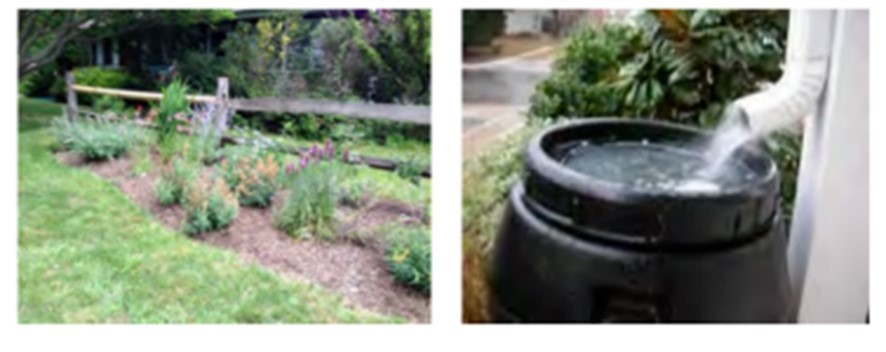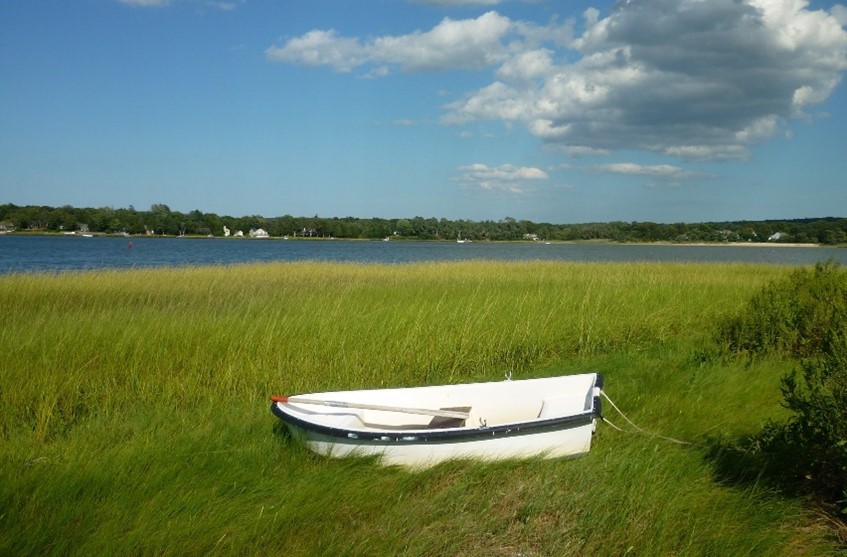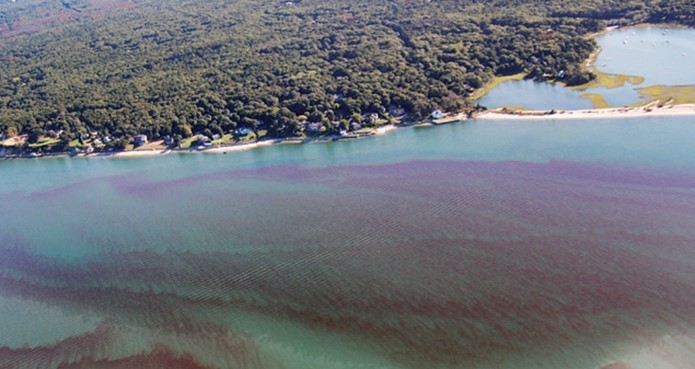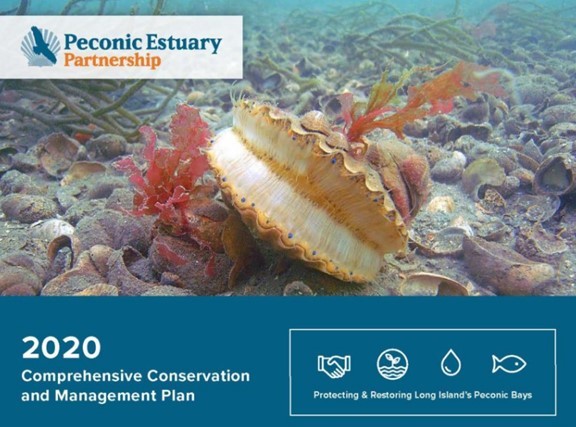Long Island Nitrogen Action Plan (LINAP) - Monthly Newsletter
The New York State Department of Environmental Conservation sent this bulletin on 06/30/2022 09:00 AM EDT |
| DEC Delivers - Information to keep you connected and informed from the NYS Department of Environmental Conservation |
| Share or view as a web page || Update preferences or unsubscribe |
Long Island Nitrogen Action Plan (LINAP) - Monthly Newsletter
|
Homeowners Rewards ProgramThe PEP Homeowner Rewards Program continues to reimburse homeowners in the Peconic Estuary watershed for the cost of removing turf and pavements, and adding green infrastructure such as rain barrels, rain gardens and native plant gardens. Homeowners can be reimbursed up to $500. So far over 100 Peconic Estuary residents have participated in the program. The PEP website has an interactive tool and plant database to help individuals and organizations plan eco-friendly landscaping projects that use native plants which reduce nitrogen and other sources of pollution. To learn more about the program and apply online, visit PEP's Homeowner Rewards Program webpage. Last month the Long Island Regional Planning Council passed a resolution to provide funding to expand the program island wide. The expanded program will be modeled after PEP’s program and administered through the NEIWPCC. It is expected to launch next spring.
Nitrogen and Septic Improvement OutreachPEP will be performing outreach events, in conjunction with Suffolk County Department of Health Services, to educate East End residents about nitrogen pollution, beneficial nitrogen mitigation projects in their neighborhoods, and incentives to upgrade their cesspools and septic tanks to I/A Onsite Wastewater Treatment Systems. The first event was held on at Riverhead Free Library on June 23, 2022, and more events will take place for each of East End Towns within the Peconic Estuary. Check PEP’s Event Calendar website for events, which is updated periodically, for future events.
Photo Credit: PEP Stormwater Wetlands Project: Meetinghouse CreekLast year PEP completed a Conceptual Habitat Restoration Design Plan for Meetinghouse Creek and has moved forward with designing a 1.2-acre stormwater wetland to treat stormwater runoff. This will improve water quality in the downstream wetland and surface water and increase the ecological quality of the habitat and improve plant and wildlife diversity. Meetinghouse Creek is listed as an impaired waterbody due to low levels of dissolved oxygen caused by excessive nutrient levels. The sources of nutrients are agricultural runoff, stormwater/urban runoff, and boat pollution. Peconic Estuary Solute Transport ModelWith funding from NYSDEC, the PEP and the USGS are close to completing a Solute Transport Model for nitrogen in the Peconic Estuary. The objective of the model is to understand historical and current nitrogen loads to the Peconic watershed. Once the model is developed, it will be used to run scenarios that will help decision makers understand how certain management actions might reduce nitrogen in the groundwater that will flow into marine waters. These results will help inform decisions about where and how nitrogen reducing efforts might be beneficial. It will also provide realistic expectations on when improvements might be seen, as the travel time of the groundwater in some areas is decades long. The scenarios being ran for the Peconic Estuary include those which outline the recommendations from the Suffolk County Subwatersheds Wastewater Management Plan, such as stormwater management, fertilizer reductions, and agricultural management practices. At this time, PEP is working with USGS to finalize the scenarios. Concurrently, USGS is expanding this model to the rest of Long Island including parts of New York City. This will provide a wealth of information that will help guide local, state and regional management actions. Groundwater Discharge StudyNext year, PEP will be working with Cornell Cooperative Extension to study groundwater discharge into Three Mile Harbor in East Hampton. The study will assess non-point source pollution by analyzing groundwater, porewater (water contained in the pore space of aquatic soil or rock), and surface water quality data to identify problem areas and investigate potential nutrient pollution reduction and habitat restoration solutions.Previous studies have addressed surface water alone, but this study will allow for a more comprehensive understanding of the hydrogeologic conditions and the groundwater, porewater, and surface water interactions. This effort will help identify areas which are either suitable for Permeable Reactive Barriers (PRBs), onsite wastewater treatment upgrades, or could benefit from nutrient bioextraction or living shorelines . Additionally, the study will potentially be useful for identifying areas for eelgrass restoration.
Harmful Algal Blooms in Priority EmbaymentsPEP is working with Stony Brook University’s School of Marine and Atmospheric Sciences Gobler Laboratory to study Harmful Algal Blooms (HAB’s) in designated priority embayments. The study will analyze three HABs (rust tide, mahogany tide and toxic blue green algae) that recur annually across the Peconic Estuary with intensities and impacts varying from year-to-year. The goals are to assess how the changes in nutrients over time affect HABs within bloom prone regions, the ability of nitrogen and phosphorus to intensify HABs, and the levels of nutrient load reduction needed to lessen the intensity of these HABs. This project will be underway soon.
2021 Annual Water Quality ReportThe Suffolk County Department of Health Services (SCDHS) has carried out periodic water quality sampling in the Peconic Estuary since 1977. In 2012, PEP partnered with the USGS to install two Continuous Water Quality Monitoring stations in the Peconic Estuary, one in Orient Harbor and another at the mouth of the Peconic River. A third USGS Station is being installed on Shelter Island at the South Ferry Dock. Together, the SCDHS and USGS monitoring systems provides information about the water quality within the estuary. This information plus a variety of other data is used in PEP’s annual Water Quality Report that provides scientists with valuable information about the health of the estuary. The Water Quality Report enables PEP to track progress on meeting its goals set forth in the Comprehensive Conservation and Management Plan (CCMP). Information in the report includes water clarity, amount of dissolved oxygen and levels of chlorophyll-a, and pathogen levels at beaches. PEP is currently finalizing the 2021 Water Quality Report and will be releasing it soon. The 2020 Water Quality Report can be found here.
Take the Reduce Nitrogen PledgeIf you are reading this newsletter you have an interest in reducing nitrogen in Long Island’s waters. An easy way to do your part is to take the Reduce Nitrogen Pledge. Check out 10 ways you can reduce your personal nitrogen inputs and take the pledge to be recognized as a leader in helping to combat nitrogen pollution in our community! Take the “Reduce Nitrogen Pledge” today. To sign up for our LINAP Newsletter, visit our LINAP website or click here. |





